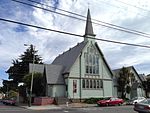Integrated Support Command Alameda

Integrated Support Command Alameda (ISC Alameda) is a large operating base of the United States Coast Guard, located on Coast Guard Island[1] in Alameda, California Now known as Base Alameda ISC Alameda provides a wide variety of services in direct support of Coast Guard activities throughout the west coast of the United States of America. Among these are the management of approximately 1200 Coast Guard owned housing units, warehousing, health care services, work-life services, transportation of household goods, and personnel support services. Facilities maintenance is provided to all tenant commands on Coast Guard Island and industrial support is provided throughout the West Coast. ISC Alameda is home to a variety of tenant commands including: Commander, Pacific Area [2] Commander, Maintenance & Logistics Command Pacific [3] District 11 [4] Sector San Francisco [5] Training Team One Naval Engineering Support Unit Alameda Electronics Support Unit Alameda Coast Guard Island, where ISC Alameda is located, is also homeport for three National Security Cutters. USCGC Bertholf (WMSL-750) USCGC Waesche (WMSL-751) USCGC Stratton (WMSL-752)
Excerpt from the Wikipedia article Integrated Support Command Alameda (License: CC BY-SA 3.0, Authors, Images).Integrated Support Command Alameda
Campbell Boulevard,
Geographical coordinates (GPS) Address Website Nearby Places Show on map
Geographical coordinates (GPS)
| Latitude | Longitude |
|---|---|
| N 37.782553 ° | E -122.249207 ° |
Address
Mile Rock Galley (Building 4)
Campbell Boulevard
94501
California, United States
Open on Google Maps






